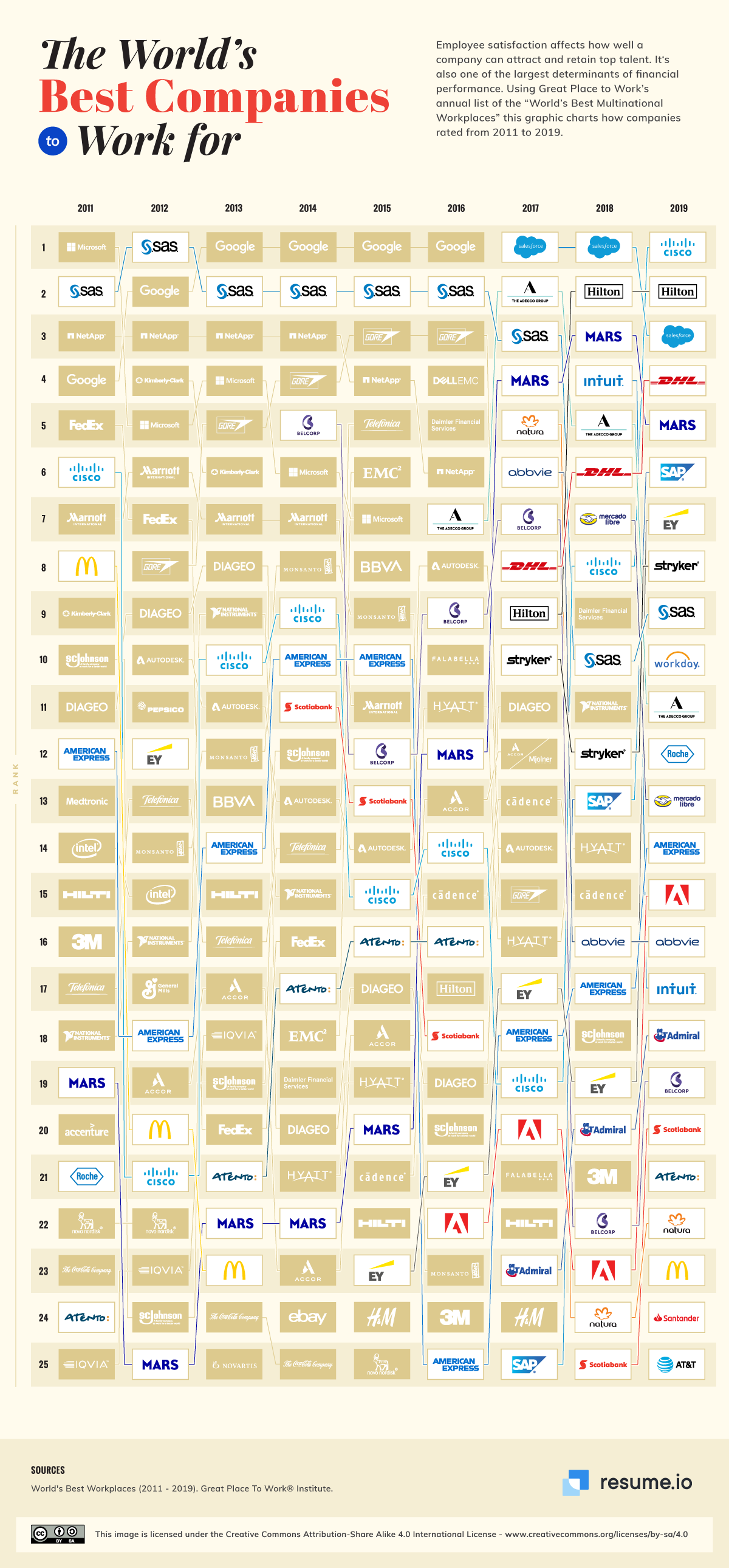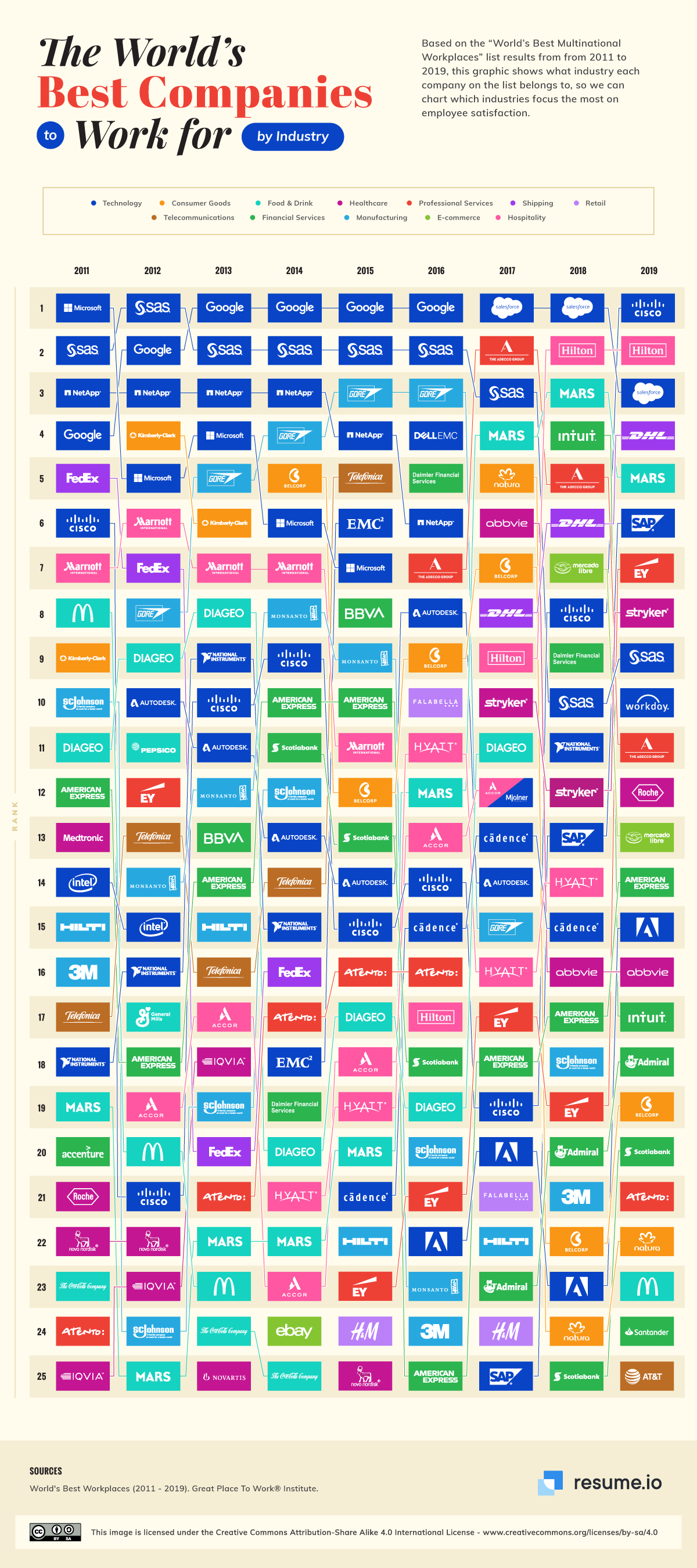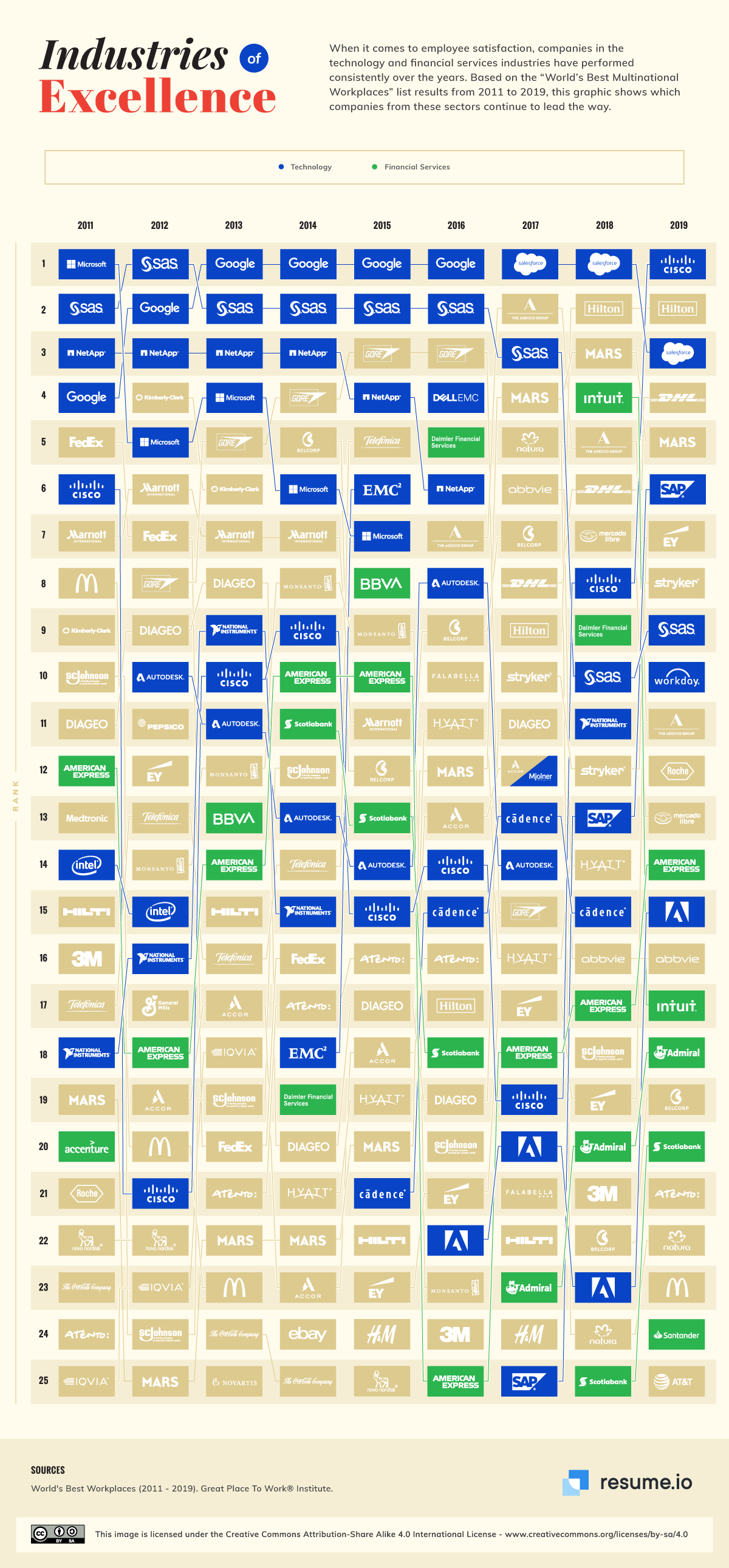In recent years, high-profile examples of lavish corporate campuses like the Googleplex and Apple Park have generated increased interest in workplace culture. Famous perks like celebrity speakers, on-site massage therapy, and free shuttles to and from work have gained mythological status in the working world, and they have likely helped attract new employees to companies offering such innovative benefits.
A quality workplace environment can help attract new employees, retain current ones, and improve overall work output. While the relationship between employee satisfaction and financial performance is difficult to assess, a slate of recent studies has confirmed that companies that are listed on “best places to work” lists tend to perform better than those that do not. In one study, researchers found that firms featured on Fortune magazine’s “100 Best Companies to For in America” list collectively outperformed the S&P 500 by 84% from 2009 to 2014. Companies featured on Glassdoor’s “Best Places to Work” list outperformed the overall market by 116%.
In a recent survey from Fractl, 2,000 U.S. workers were asked what benefits they consider most when choosing between jobs. The perks that respondents believe to have the most importance include health, dental, and vision insurance, more flexible hours, more vacation time, and work-from-home options. Other desirable perks include free fitness and yoga classes, free snacks, and company-wide retreats.
Every year, labor research organization Great Place to Work releases its list of the world’s best workplaces, a collection of companies that have been recognized across the globe for their outstanding workplace culture. To be considered, a company must have been named to at least five other best workplace lists and have a workforce of at least 5,000 employees, with at least 40% of the workforce based outside of the company’s home country. Resume.io compiled the top workplace lists for the years 2011 to 2019 to see how the world’s top office environments have changed over the past decade.

A rewarding industry
Several trends stand out from the chart. By far, the dominant industry in workplace culture over the past decade has been technology. More so than maybe any other industry, tech companies live and die by their ability to attract top talent, investing billions in unique amenities for workers. Of the 60 companies that have made the “World’s Best Multinational Workplaces” list from 2011 to 2019, 16 are technology companies.
Second to technology is financial services. While the finance industry used to be the premier destination for the world’s top business students, today many financial services companies are competing with Silicon Valley to attract talent. Of the 60 companies in our universe, eight are in the financial services industry, including American Express, Daimler Financial Services, and Scotiabank. Other industries with a large clustering of companies with highly rated work environments include health care and food and drink.
Meanwhile, the e-commerce, shipping, telecommunications, and retail industries are home to just two companies each. Companies in these industries often have high turnover, low wages, and invest little in employee retention. Some of the standout companies from these industries include Spanish telecommunications company Telefónica, German shipping company DHL, and U.S. shipping giant FedEx.

The times they ‘aint’ a-changin
Several tech companies have been mainstays on the “World’s Best Multinational Workplaces” list over the past decade. SAS Institute has consistently placed towards the top of the list, ranking between 1st and 10th place every year from 2011 to 2019. Google made the list six years in a row, placing between 1st and 4th place from 2011 to 2019, while NetApp consistently ranked between 3rd and 6th place.
By far, the company with the greatest improvement over the past decade was food manufacturer Mars, Inc. While Mars ranked 19th in 2011 and 25th in 2012, the company’s status slowly improved with each following year, eventually earning Mars the 3rd place spot in 2018. Similarly, while health care company Roche placed 21st in 2011 and did not make the list for the seven years following, in 2019 the company ranked 12th.
One company experienced a dramatic decline in rank. While McDonald’s ranked 8th in 2011, the company ranked 20th the following year and is sitting in the 23rd place as of 2019.
Applying for jobs can be competitive, read here how you can build a winning resume from scratch.

According to data from the Bureau of Labor Statistics, the number of job openings in the United States has been greater than the number of people looking for work since January 2018 -- the first time this has occurred since the BLS began tracking job turnover in 2000. As the worker shortage continues to grow, creating a quality work environment that will attract new talent will likely become more important to a company’s bottom line than ever.
Methodology
To visualize the world's best companies to work for, Resume.io analyzed the companies on labor research organization Great Place to Work’s annual “World’s Best Multinational Workplaces” list from 2011 to 2019. To be eligible for the list, a company must have been named to at least five other best workplace lists and have a workforce of at least 5,000 employees, with at least 40% of the workforce based outside of the company’s home country.
- Yang, L. (2017). 13 incredible perks of working at Google, according to employees. insider.com
- Edmans, A. (2014). Employee satisfaction and firm value: A global perspective. voxeu.org
- Jones, K. (2017). The Most Desirable Employee Benefits. hbr.org
- U.S. Bureau of Labor Statistics. (2019). Annual total separations rates by industry and region, not seasonally adjusted. bls.org
- Darmody, J. (2019). How will the financial industry compete for tech talent?siliconrepublic.com
- Campbell, A. (2019). The US is experiencing a widespread worker shortage. Here’s why. vox.com
- Federal Reserve Bank of St. Louis. (2019). Job Openings: Total Nonfarm vs. Unemployment Level. fred.stlouisfed.org






